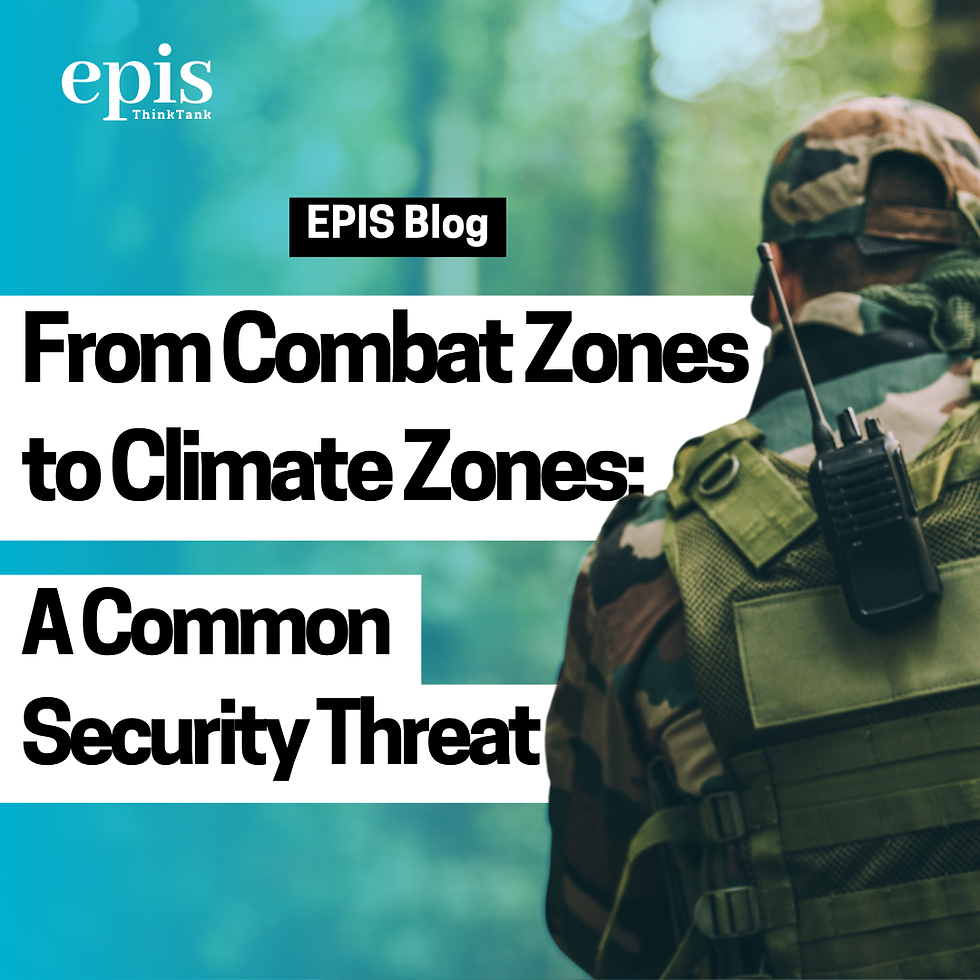
The rising sea levels that threaten to engulf coastlines and the extreme weather that ravages regions globally are not just concerns for climate scientists and ecologists. Gone are the days when the battle against climate change was fought with recycling bins and carpools. It is now a matter navigated in military headquarters worldwide. The urgent and immense scale of climate change's threat to global security has elevated this crisis from an environmental concern to a critical military imperative. It demands resources and strategic planning that go beyond well-intentioned mitigation efforts. Military reform is not just a precaution but a pressing and current line of defence against extreme climate events and resource scarcity that threaten global security.
Climate change poses a complex web of unprecedented security challenges in scope and simultaneity. As global temperatures rise, concerns around water and food scarcity loom. Increased extreme weather, including flooding, hurricanes, and droughts, can devastate infrastructure and displace populations. These climate-induced disasters require efficient and dynamic forces to pivot towards humanitarian assistance and disaster relief. Climate change acts as a threat multiplier, exacerbating existing tensions and potentially strengthening violent actors. For instance, opening new Arctic sea routes introduces fresh areas for potential conflict and competition. Rising sea levels and uninhabitable environments could lead to unprecedented migration, straining resources, and potentially destabilized regions. Similarly, as climate change drives increased urbanization, megacities may face governance failures and lawlessness, presenting an independent host of new security challenges.
Climate change is now a fundamental aspect of defence policies and operations. The U.S. Department of Defense's 2021 Climate Adaption Plan is a prime example of this shift. Their strategy emphasizes mitigating unmanageable climate change and managing unavoidable impacts. As such, military installations are being fortified against climate threats. The U.S. Department of Defense has already self-reported that 1,700 of its sites could be affected by sea-level rise in the coming years. And according to a 2019 report, climate-related impacts on the geographic combatant commands of the U.S. Department of Defense have already occurred on a large scale. From Arctic exercises to desert training, militaries are preparing for operations in extreme and changing environments. Armed forces are making significant investments in renewable energy and efficiency to reduce their carbon footprint and curb the impact of their own operations to ensure energy independence even in volatile climates. Militaries must continue this initiative by aligning themselves with the forefront of climate research, developing new technologies, and improving climate forecasting to enhance their adaptive capabilities.
While military adaptation is crucial, the global nature of climate change demands a coordinated international response. Collaboration with partner nations on climate-related security challenges was outlined across multiple programs in the NATO Climate Change and Security Action Plan and is essential in curbing climate change. International collaboration allows for a more integrated confrontation to mitigate global and local climate threats. Indeed, combating climate change requires enormous resources; alliances can help distribute the burden and leverage each nation's strengths, including expertise in many forms and disciplines. Diplomatic channels are likewise crucial in the management of potential conflicts arising from resource scarcity, mass migration, or any other host of effects before they escalate to military confrontations. Alliances can facilitate sharing technologies and best practices in climate adaptation across nations. International cooperation is not just beneficial but vital for establishing and enforcing military capabilities to provide security against environmental threats and looming disasters.
The security implications of climate change represent a paradigm shift in the perceived global threats. Relying solely on traditional notions of national security is not viable. Instead, we must leverage military innovation and diplomatic alliances' power to address this existential crisis and establish climate change as a common enemy. At this critical juncture, the impacts of climate change are well established but do not yet serve as a cornerstone for global conflict. Broadly, the current response to climate change may set the tone for the century's security landscape. Countries must leverage and share their expertise, recognize the inextricable link between climate and security, and foster robust international partnerships. This model should be applied across all research and technological domains to navigate the turbulent waters of preserving global stability.
A. Zuckerman is an analyst for a private intelligence company based in the Middle East. She has several years of foreign affairs experience and holds certifications in multiple research specialities. She is currently pursuing a B.A. in Diplomacy and Security studies.

Comments